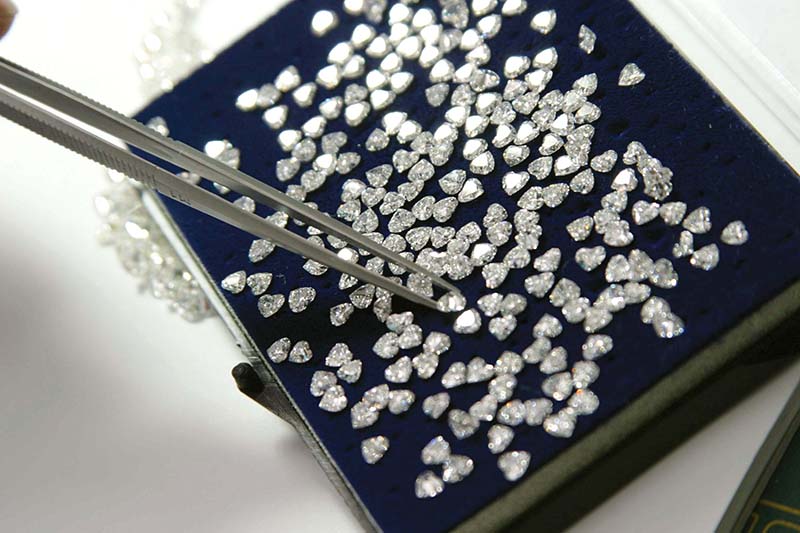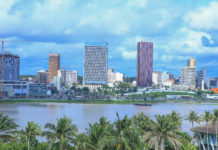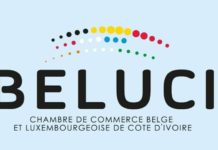Antwerp has been the nerve center of the diamond industry since the 15th century. In 2015, 84% of the world volume of rough diamonds passed through the economic capital of Flanders in Belgium. In the heart of the Diamond Quarter, the Antwerp World Diamond Center is the most important place of this industry where an impressive volume of 192.6 million carats of rough and polished diamonds imported and exported valued at 48.3 Billion dollars transits. Here we meet the actor who certifies the origin of the diamonds and thus guarantees the quality of the “made in Antwerp”. 1
The purity, the hardness and the brilliance of diamonds make you dream and give an important value to these stones. The sector, which has been deployed in Antwerp since the Renaissance, now ranks 4th in the ranking of the goods trade industry. In Belgium, the sector represents 6,600 direct jobs and 26,000 indirect jobs. Around the world, Antwerp is known for its “Cut in Antwerp” label, a special and quality cut given to diamonds by Antwerp tailors. Our editorial team went to the backstage of the diamond players who, through their knowledge, make Antwerp capital city of the purest stone in the world.
A few steps away from Antwerp Central Station, a security gantry guarded by soldiers and security guards show you that you are enterring the “Diamond Square Mile”, also known as the Diamond Quarter. The industry is concentrated in these few streets where the Diamond Exchange and the Antwerp World Diamond Center provide buyers and sellers with rough and polished diamond. Tourists and professionals mix in these alleys, all share the same fascination when a pure diamond sublimes the light of day. This landscape that seems so natural today has not always been the same.
Since when has Antwerp been the city of diamonds?
The sector of the diamond cutting industry appeared in Antwerp at the end of the 15th century. Until then, it was Bruges that was the center of the sector. However, Antwerp, with its commercial and communication infrastructure quickly becomes a must for diamond cutters. It is the journey of Vasco da Gama from Lisbon to India, which created a new trading route between the ports of Lisbon and Antwerp, that made the Venice-Bruges route obsolete. 1
Despite the development of the port of Amsterdam in the second half of the 16th century, Antwerp maintained its dominant position, until the conquest of the city by Charles Quint. The treaty called Peace of Munster between the Netherlands and Spain resulted in the closure of the river Scheldt, resulting in the paralysis of the area and the sector. In 1863, the measure was lifted and diamonds discovered in South Africa in 1866 causes the revival of the famous Antwerp industry. An incessant flow of stones arrive in Europe via Antwerp and the number of cutters is constantly increasing. The Second World War will have serious consequences for the sector, dominated by the Jews in Antwerp. However, soon after the end of WWII, the industry comes back to life and the diamond market flourishes again. India takes the business of the diamonds cut in the years 60/70 but Antwerp remains the most reliable center of negotiation and international trade.
How to import a diamond ?
When talking about the sale of diamonds, three key words stand out:
traceability, origin and value.
Full transparency is the« sine qua non » condition and the necessary mechanisms to guarantee it have been created. The time of Vasco de Gama is far away.
The diamond is a miracle of nature, unrivaled in its hardness and purity. A subtle blend of pressure, fossil materials and thousands of years are needed to achieve the unique hardness and brilliance of the diamond. Finding and exploiting diamonds is not easy. Ten years are necessary between the discovery of an area and its commercial exploitation. The control procedures of this rare stone are therefore multiple to ensure its authenticity.
The European Union is a common market, facilitating access to the markets of 28 countries for any importer. Any diamond accepted in the Union can therefore circulate freely. The entry conditions must therefore be clearly defined and controlled by an independent and reliable entity.
Antwerp, entrance gate of the diamond
European legislation governing the import and export of diamonds is clear and precise. Transposed in Belgium via the Royal Decree of April 30, 2004 the law specifies that the diamond goods must necessarily enter the territory by points of entry in Europe where the origin of the stones and their value must be controlled by the authorities.
Six entry points exist in Europe; Antwerp (Belgium), London (Great Britain), Idar-Oberstein (Germany), Lisbon (Portugal), Prague (Czech Republic), Bucharest (Romania) and Sofia (Bulgaria).
In Belgium, the diamond industry is composed of 1,700 companies specialized in diamond, registered with the SPF Finance and Economy. Antwerp is one of the most important entry points in the world, issuing 50% of Kimberley certificates (certificate that must accompany any stone and that determines its value, origin and country of export) worldwide.
Who determines the value of diamonds?
“Diamond is a safe and timeless value. Gold has a price of the day, but it is different in the diamond sector. The diamond industry is very important for Belgium, it represents 5% of all Belgian exports and 15% of exports outside the European Union. “Says Ari Epstein, CEO of the AWDC.
The “Rapaport Diamond Report” gives a price reference according to 4 characteristics determined and which are universal : Color, size, purity and carat weight. The name of this reference list comes from Martin Rapaport, the son of a diamonds cutter, who had worked in the industry in New York as a diamond broker since 1975. The fixed price lists have become unavoidable and, over the years, the RapNet Interactive diamond market was born. This price list is recognized universally by industry players.
“The Antwerp World Diamond Center” was founded in 1973 in the form of the “Hoge Raad voor Diamant”, it was initiated by the Belgian government and representatives of the diamond industry. In 2007, the institution was restructured and divided into two different companies.
The first, the “Antwerp World Diamond Center” represents the interests of the sector and the city of Antwerp as the diamond capital, it is often considered as the voice of the sector, represented by its President Ari Epstein.
The AWDC is also the physical location of the European entry point for diamonds in Antwerp. The origin of the stones is controlled by an independent authority and a delegation of the Fiscal administration, the Customs Service is delegated permanently.
Each rough diamond that circulates in the world must be accompanied by a “Kimberly Certificate”, be sealed in a clearly identifiable secure container identified on the document. It is then easy to trace the origins of the stones accurately and unequivocally. The Center is responsible for the issuance of 50% of all Kimberly certificates worldwide. At the European level, 30,000 certificates are issued annually, almost all in Antwerp.
The name of the certificate comes from the city of Kimberly in South Africa, founded for diamond mining. It will also give the name to the “Kimberlite”, an ultramafic rock made of magnesium and iron, potassic and rich in incompatible elements.
The supervisory authority sends a notification to the customs office that a package is being sent. Customs may carry out a verification of the value of the goods as assessed by the independent authority. It must nevertheless be carried out within ten minutes. The goods are then checked in the presence of the seller or his representative and cleared. After this double control, the seller is free to dispose of his goods throughout the European Union.
The year 2015 was more difficult than the other years for the diamond industry. However, Antwerp can boast to keep its head high and continue to be a center of excellence recognized worldwide thanks to its 550 years of experience. An exceptional story that is part of the timelessness and exceptional brilliance of the most precious stone in the world.



